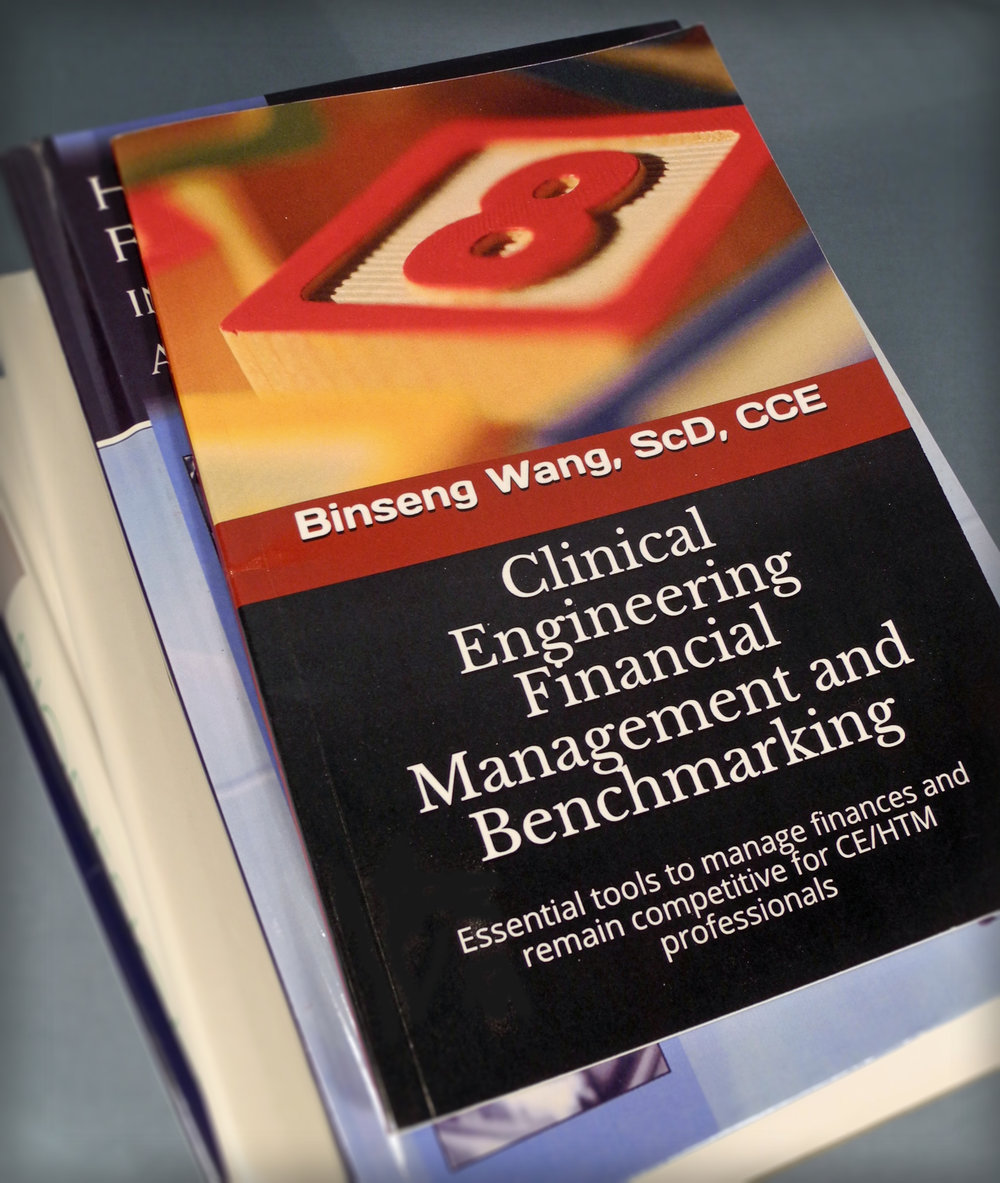 Clinical Engineering Financial Management and Benchmarking (2018) is a self-published book written by my friend and colleague, Binseng Wang. The relatively short book (60 pages) draws from Dr. Wang’s long career as a clinical engineer and shows why he is widely regarded as one of those rare creatures: engineers who can write.
Clinical Engineering Financial Management and Benchmarking (2018) is a self-published book written by my friend and colleague, Binseng Wang. The relatively short book (60 pages) draws from Dr. Wang’s long career as a clinical engineer and shows why he is widely regarded as one of those rare creatures: engineers who can write.
The subtitle of the book — Essential tools to manage finances and remain competitive for CE/HTM professionals — summarizes the reason for the book. From the beginning, the watchwords for the clinical engineering profession have been safety and effectiveness. We do our best to supply patient care providers with medical equipment that is effective (doing what it’s supposed to do: achieve a clinical objective) and safe (not doing what it’s not supposed to do: harm patients or staff). Increasingly, however, doing a good job in our field means doing it economically; cost-containment is essential.
The term HTM professional in the subtitle is recognition of the fact that medical equipment maintenance programs are run not only by clinical engineers but also by biomedical equipment technicians and other technical and management personnel. And, in many cases, we as HTM professionals are better at the safety and effectiveness aspects of our jobs than we are at the financial aspects. This book sets out to strengthen that third pillar of success.
The book has two distinct sections. In the first section — Financial Management — the author explains how to lay out a budget for the medical equipment maintenance function of an HTM program. It carefully defines a range of financial terms, some of which may be unfamiliar or unclear even to experienced managers. Of particular value are examples that are numerous, detailed, and based on real data.
Something thing the book does not cover — thereby offering the reader an opportunity for digging deeper into the HTM financial management literature — is how to determine what the numbers should be for a particular HTM program. For example, the book describes in detail how a personnel budget is structured but doesn’t help the reader determine if the current number of FTEs of various types is appropriate. Questions like “Is the amount of money we’re spending on service contracts money well spent?” are beyond the scope of this book.
The second section — Financial Benchmarking — is a detailed summary of the author’s research and associated publications. It’s an important body of work and having it laid out in a cohesive manner is valuable to HTM professionals at all levels of managerial experience. The statistics in this section will be tough-going for some readers, but it’s good to see some of our makes-sense-to-me assumptions tested by rigorous data analysis. We can trust the conclusions that the author draws.
I do think that the author and I have different perspectives on the role of benchmarking. As someone who was involved for many years in AAMI’s HTM benchmarking activities (see the reference at the end of this blog post). I look at benchmarking as (a) a way to measure the performance of my HTM program (to know how good I am), (b) a way to compare my performance to the performance of comparable HTM programs in other organizations (to know how much better I could be), and (c) a way to focus my performance improvement efforts. In other words, benchmarking is a management tool for performance improvement.
Working from a somewhat different perspective, the author focuses on identifying the factors that contribute to what he calls Total CE Expense, the annual cost of the entire medical equipment maintenance program. In pursuit of this worthy objective, he examines several factors. For example, the author considers the Cost of Service Ratio (COSR) metric —annual maintenance cost relative to the value of the equipment maintained — and judges it (accurately, in my opinion) as difficult to measure reliably and as not being highly correlated with Total CE Expense. Fans of statistics will love this material.
The author then analyzes several other metrics — Hospital Total Operating Expense, Adjusted Patient Discharges, Adjusted Patient Days, Staffed Beds — in terms of their statistical correlations with Total CE Expense. His conclusion is that no single metric adequately explains Total CE Expense and, therefore, a combination of metrics must be used. Disappointingly, because of the proprietary nature of the dataset he used, the author is not able to tell the reader how to combine the metrics nor how well the combination explains Total CE Expense.
There is an extensive References section that lets the reader build on the text. The book is available from Amazon in Kindle and paperback formats; if you purchase the paperback, the author will send you a spreadsheet with examples from the text that let you play out your own “what if” scenarios.
The bottom line — if I may be forgiven for using that dreadful cliché — is that this not-too-expensive and not-too-lengthy book, written by one of the most distinguished members of the clinical engineering profession, covers the basics in a trustworthy manner. If that sounds like information you could put to good use, I encourage you to get a copy.
REFERENCE: HTM Benchmarking Guide (2nd edition) by Ted Cohen, Matt Baretich, Frank Painter, and David Braeutigam (AAMI, 2018). Available for free download at www.aami.org/BenchmarkingGuide.
